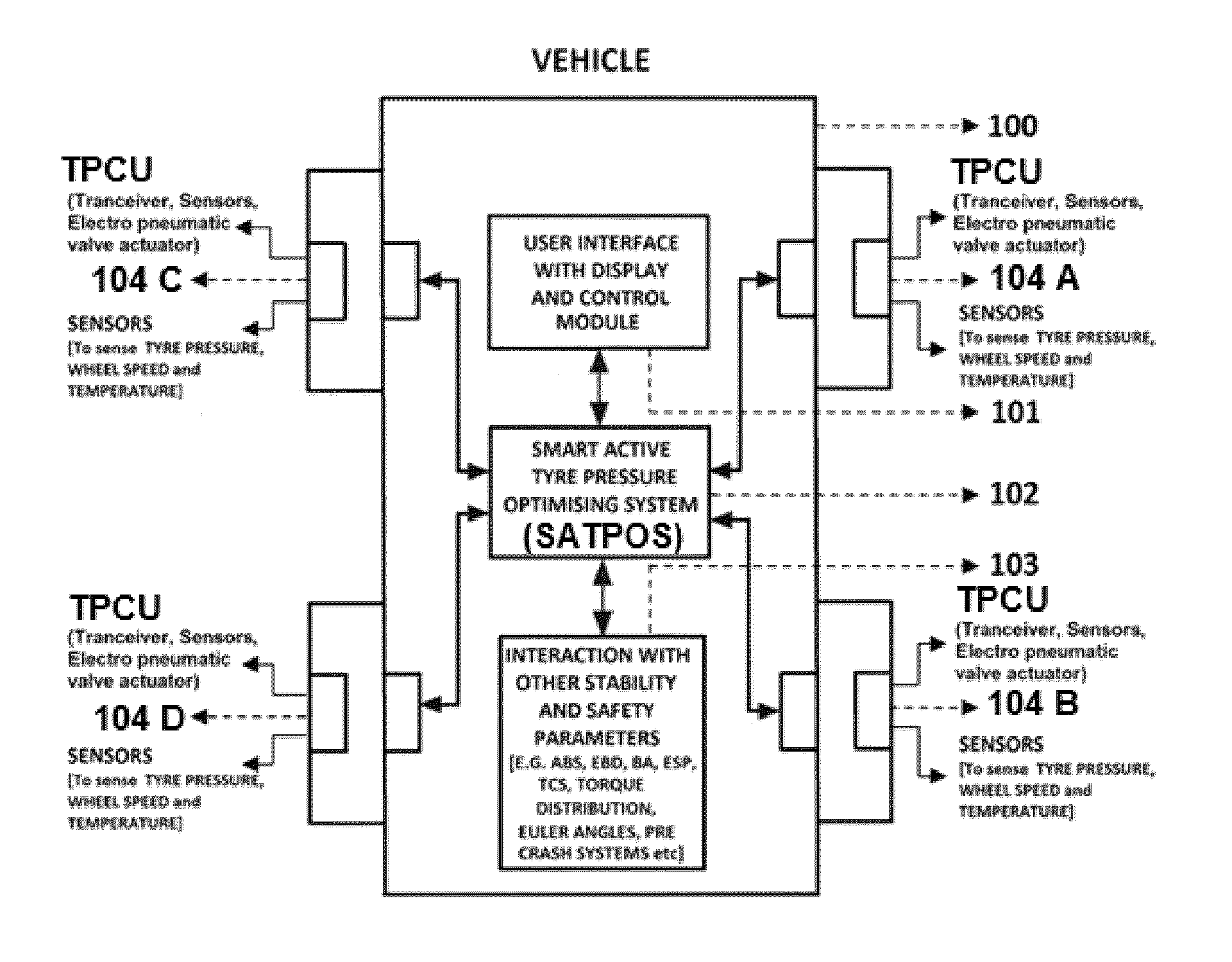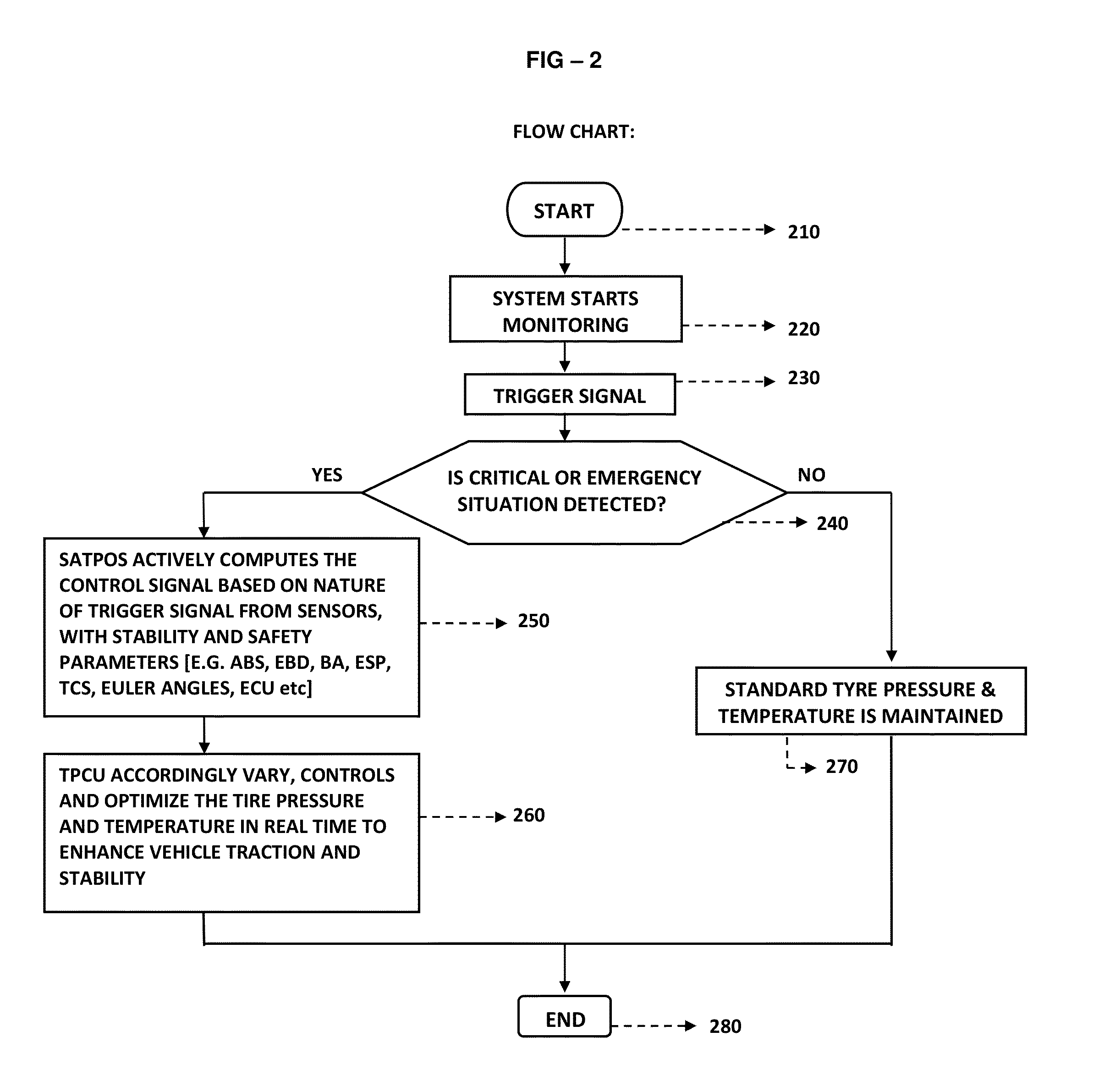Smart active tyre pressure optimising system
- Summary
- Abstract
- Description
- Claims
- Application Information
AI Technical Summary
Benefits of technology
Problems solved by technology
Method used
Image
Examples
Embodiment Construction
[0028]TPOS works by actively sensing critical situations and computing the tire pressure in real time based on parameters comprising of sensor system, vehicle stability & safety systems, nature of breaking & break force, tires lower & upper cut-off threshold pressure values, sensing reservoirs and tires internal & external or environmental—pressure, temperature, moisture, humidity, vehicles speed, wheel speed, acceleration & deceleration, orientations & axial rotation [yaw, pitch and roll], load distribution [load on each wheel tire], torque distribution, vehicles suspension & vertical dynamic, transverse motion & lateral acceleration, tire traction, Coefficient of Friction [COF], slip and slide angle, steering wheel position, cornering effects, change in centre of gravity, over & under steering, aqua or hydroplaning, radars detecting objects with pre & current computing of tire pressure to assist in emergency breaking & stability based on range, direction and dimension of objects i...
PUM
 Login to View More
Login to View More Abstract
Description
Claims
Application Information
 Login to View More
Login to View More - R&D
- Intellectual Property
- Life Sciences
- Materials
- Tech Scout
- Unparalleled Data Quality
- Higher Quality Content
- 60% Fewer Hallucinations
Browse by: Latest US Patents, China's latest patents, Technical Efficacy Thesaurus, Application Domain, Technology Topic, Popular Technical Reports.
© 2025 PatSnap. All rights reserved.Legal|Privacy policy|Modern Slavery Act Transparency Statement|Sitemap|About US| Contact US: help@patsnap.com



